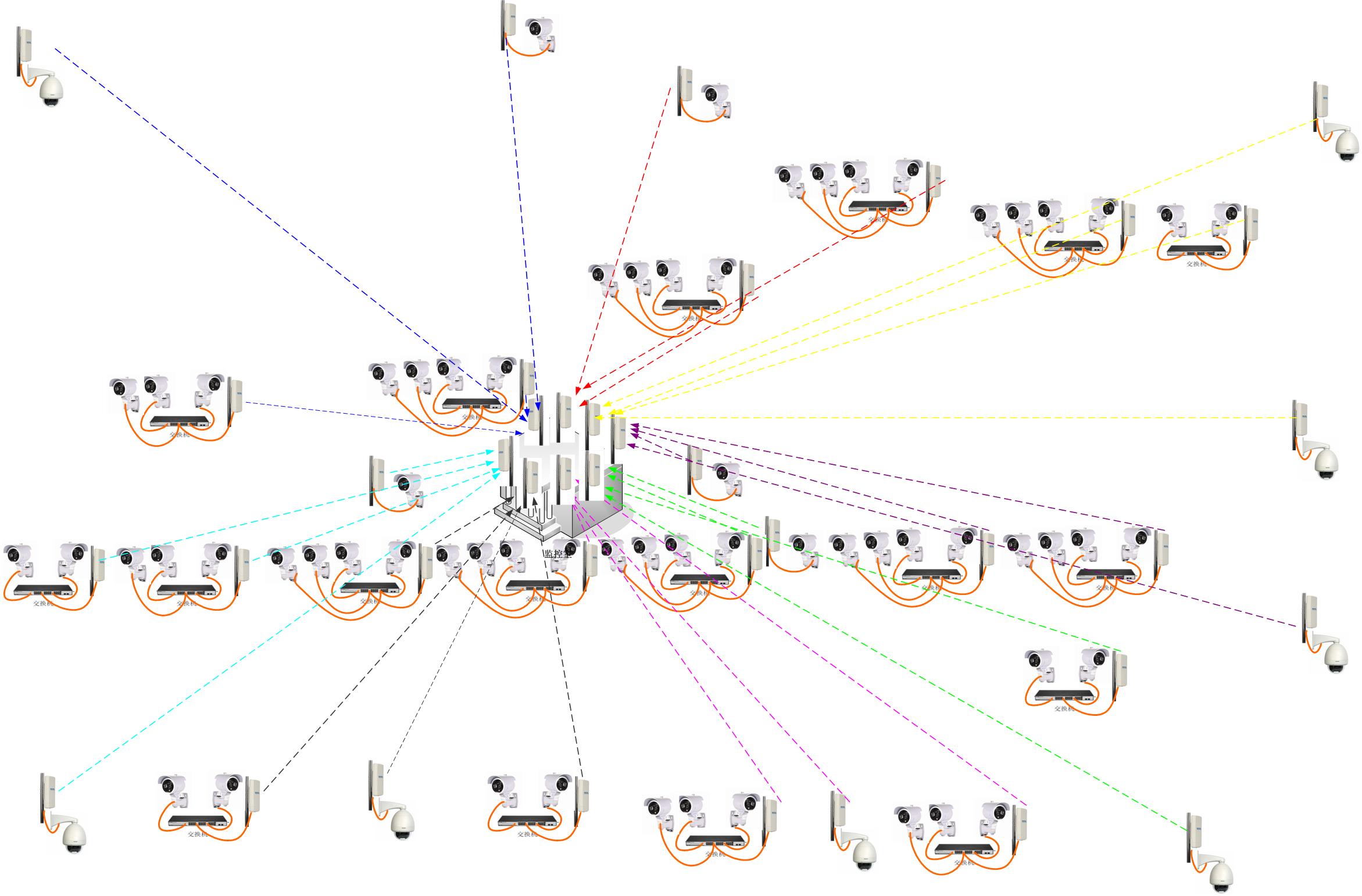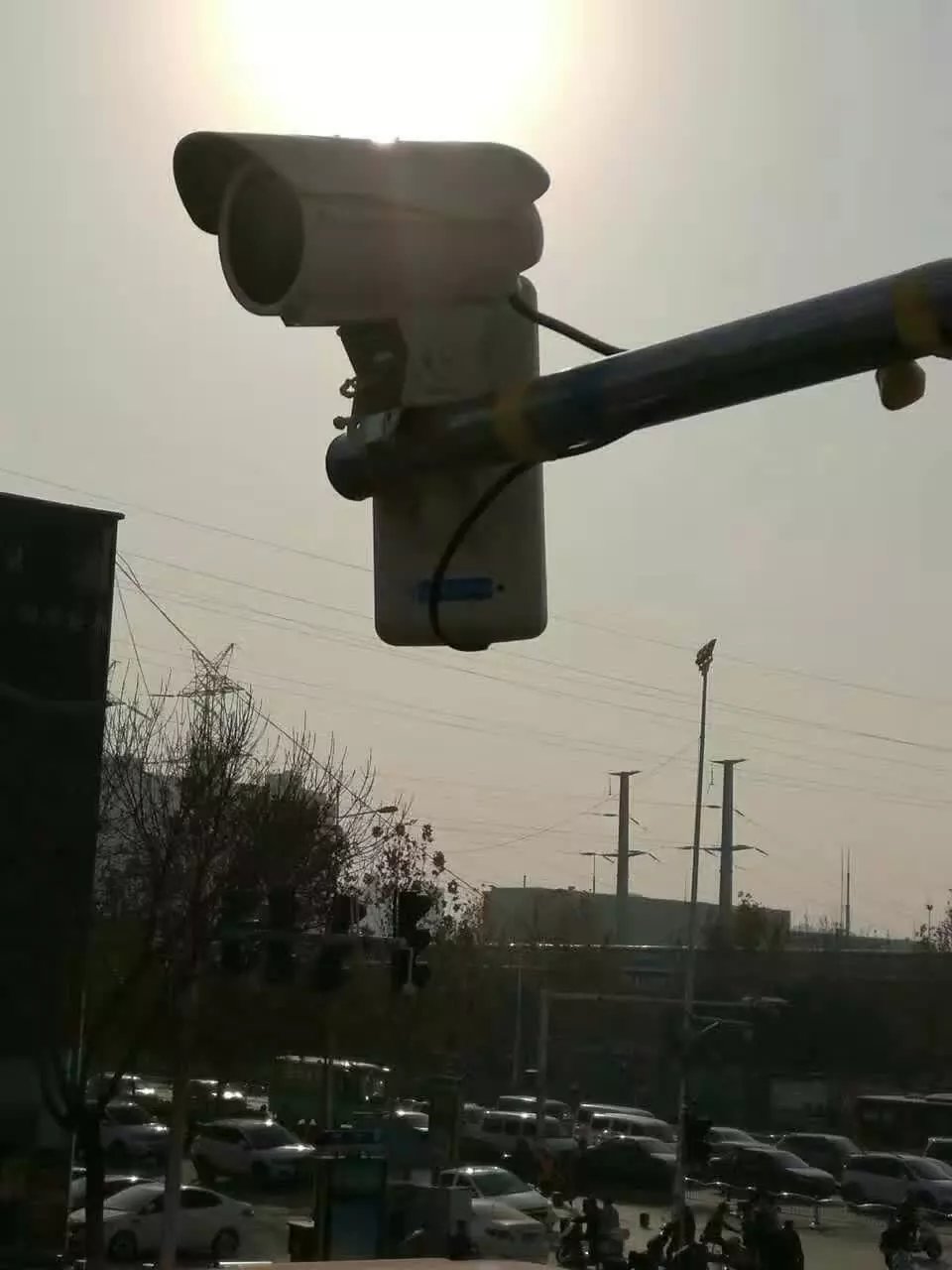In the security monitoring system, many wireless point-to-multipoint transmission methods are adopted for cost and practical considerations. Ryan's wireless bridges can use point-to-point, point-to-multipoint, and relaying three transmission methods. Well, today we will focus on explaining what aspects of the point-to-multipoint wireless transmission mode should be taken into account in applications.
What is point-to-multipoint transmission?
Point-to-multipoint refers to the transmission mode where multiple transmitters correspond to one receiver. For example, four transmit bridges use a bridge to receive.
Point-to-multipoint transmission mode applications?
For wireless bridges, point-to-multipoint transmission is a slightly more complex method. Because the loss of signals during transmission is greater than point-to-point (one-to-one) transmission, this method is suitable for those monitoring points. More concentrated, larger number, and closer transmission distances.
If the transmission distance is relatively long or the monitoring points are more dispersed, then the point-to-point transmission mode is better. Because this kind of transmission mode loses little, can guarantee the long-distance stable transmission of signal and data.
Point-to-multipoint transmission mode needs attention?
1, the proportion of how much is appropriate
Although wireless bridges can perform point-to-multipoint transmissions, the transmission process pays attention to a proportional problem. Can be more than one point, does not mean that there can be no limit to many points. General Leian recommends that the 1:4 ratio be the best. If the proportion is too large, it will easily lead to the problem of grabbing the channel.
2, the transmission distance
The above description also shows that point-to-multipoint is not suitable for use in situations where transmission is too far. Generally not more than 8 kilometers, about 3-5 kilometers is good. The closer the distance, the better. Like within 1-2 kilometers, you can consider omnidirectional 360-degree coverage.
If communication is required and the distance is far away, then if the transmitting end and the receiving end are on the same communication link, it is also feasible to make it point-to-multipoint.
3, the problem of the angle.
When it comes to distance, you have to say the angle problem. As we all know, all wireless bridges have a certain angle. The devices within 10 kilometers of the wireless network bridge of Lai'an are generally transmitted through the bridge with built-in antenna. More than 10 kilometers of external antenna. The receiving angles are 60 degrees, 90 degrees, 120 degrees, 180 degrees, etc., and are configured according to the actual situation. The front end of the transmitter end angle is preferably within 20 degrees.
4, camera
If it is an analog camera, transmission using analog transmission equipment can only be point-to-point transmission mode.
The point-to-multipoint transmission mode can be used only when the front camera is a webcam. In addition, every time we will consult the customer carefully about the camera's pixel problem and stream, because if the pixel is larger, the required bandwidth is larger, if the camera with too large pixels uses point-to-multipoint transmission, it may cause the receiving end The amount of data is too large, and there is a problem that the data cannot be transmitted normally. Cameras like those with ultra-high pixels are generally not suitable for point-to-multipoint wireless transmission.
5, bandwidth issues
Also consider the bandwidth issue of wireless bridges. General Ryan more mainstream wireless bridge is 5.8G, 300M wireless bridge. The frequency of 5.8G is relatively clean, and its anti-interference ability is relatively strong. It can be used in most wireless monitoring applications. Of course, how to configure, you also need to see the bandwidth required for the front-end launch. In addition, high bandwidth devices also have 800M, 1000M.
Welcome to inquire Levin technology.
Graphite Mould
At our factory outlet, we offer a wide range of hot-selling graphite moulds for casting. These moulds are manufactured using high-quality graphite materials, ensuring durability and long-lasting performance. Our graphite moulds are designed to withstand high temperatures and provide excellent dimensional accuracy for producing high-quality castings.
Some of our popular graphite moulds for casting include:
1. Graphite Ingot Moulds: These moulds are used for casting metal ingots, such as gold, silver, and other precious metals. They come in various sizes and shapes to accommodate different casting requirements.
2. Graphite Crucibles: Crucibles are essential for melting and pouring molten metal into moulds. Our graphite crucibles are highly resistant to thermal shock and have excellent heat retention properties.
3. Graphite Dies: Dies are used for casting complex shapes and intricate parts. Our graphite dies are precision-machined to ensure accurate and repeatable casting results.
4. Graphite Plates: Plates are used for casting flat or thin metal parts. Our graphite plates are available in various thicknesses and sizes to meet different casting needs.
5. Graphite Rings: Rings are commonly used for casting cylindrical or round-shaped metal parts. Our graphite rings are highly durable and can withstand high temperatures and pressures.
All our graphite moulds are carefully crafted to meet the highest quality standards. They undergo rigorous quality checks to ensure they are free from defects and can provide consistent and reliable casting results.
If you are looking for high-quality graphite moulds for casting, visit our factory outlet to explore our wide range of hot-selling products. Our knowledgeable staff will assist you in finding the right moulds for your specific casting requirements.
Graphite Mould,Graphite Bar,Graphite Plate Sheets,Graphite Ingot Mould
Yixing Xingfeng Carbide Mould Co.,LTD , https://www.xfcarbidemould.com

